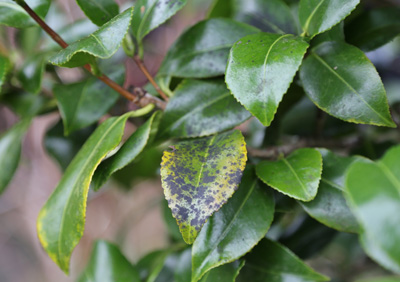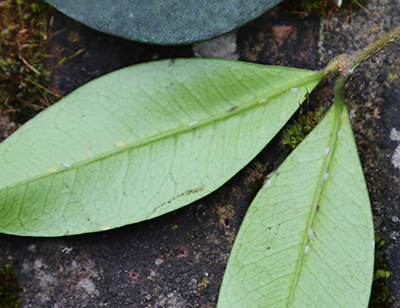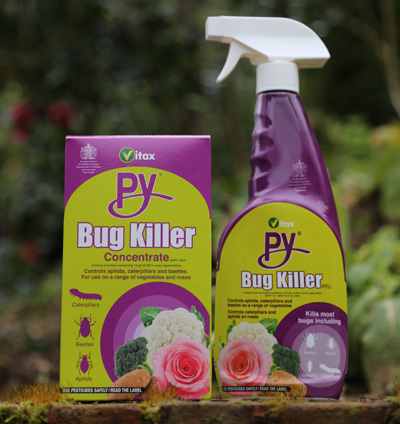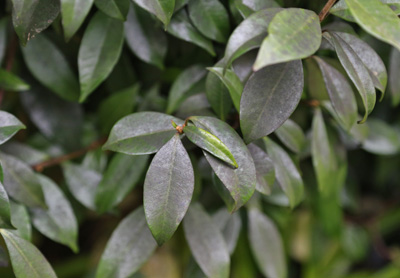How to deal with sooty mould
 How to deal with sooty mould
How to deal with sooty mould
“What are the black, sooty deposits on my camellia leaves?” must be one of the most frequently asked gardening questions. This is a widespread and common problem which affects a range of evergreen shrubs and climbers, both in the garden and in greenhouses and conservatories. It is more likely to occur where a plants is growing in sheltered conditions: against a wall or fence, under the eaves of the house or protected by neighbouring plants. Although it can occur at any time of the year it is most noticeable in late winter and early spring, before plants commence active growth.
What is sooty mould?
Basically the upper surface of the leaf becomes partially or totally covered with a black mould. The deposits may be in spots, patches or spread over the surface. Severe conditions prevent sunlight from reaching the surface of the leaves which can affect plant growth. In all instances it looks unsightly.

Often mistaken for a fungal infection of the plant it is in fact a secondary problem. The black mould has established itself on the sticky deposits secreted by an insect pest, nearly always scale insects which are located on the underside of the leaf, hidden along the midrib.
Careful inspection of the underside of a sooty leaf will usually reveal small, elliptic bodies lying along the rib of the leaf. These may be pale and translucent or brown in colour. They do not move around and do not immediately appear like insect pests.
How to treat sooty mould
To clear the problem you need to treat the cause: in other words kill the insects that are producing the sticky deposit. Scale can be tricky because the insects are so well concealed and protected by a scaly coat.

Vitax Py Bug Killer, available as a ready to use spray or a concentrate for dilution and application through a pressure sprayer controls a wide variety of pests. It must be sprayed carefully, wetting both the upper and lower surfaces of the leaves in still, dry weather conditions. Repeat applications will be necessary to get the problem under control.
Using a pesticide will not clear the sooty mould, but it will gradually fall away, helped either by rainfall or a hose-end sprayer used after the insect pests have been killed.
In some cases severe aphid infestation can produce similar sticky deposits which attract sooty mould. In this case the treatment is the same.
Which plants are commonly affected?
Sooty mould is most commonly a problem on evergreen shrubs with leathery leaves. Camellias seem to be the most vulnerable, also citrus plants in conservatories. Evergreen euonymus often suffers and grown near walls and fences seems particularly vulnerable to scale.

The popular evergreen climber Trachelospermum jasminoides is often affected by scale insect and develops severe sooty mould on sheltered walls. Bay trees are often affected, especially those grown in containers in sheltered situations near to the house. Vitax Py is the ideal insecticide to use on citrus and bay because it can be used on both ornamental and edible crops.
Sooty mould sometimes affects deciduous shrubs and trees, especially lime and sycamore in sheltered urban situations. In this case it is more often a result of aphid attack.
Andy McIndoe
For Vitax Spring 2018
Find a stockist near you
To check if the product you require is in stock, please contact the retailer prior to visiting.
Your login details have been used by another user or machine. Login details can only be used once at any one time so you have therefore automatically been logged out. Please contact your sites administrator if you believe this other user or machine has unauthorised access.












